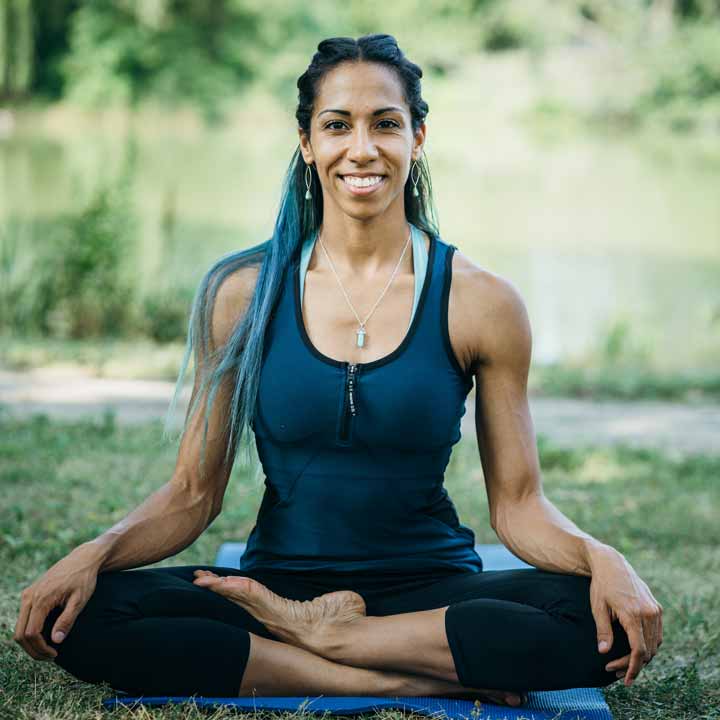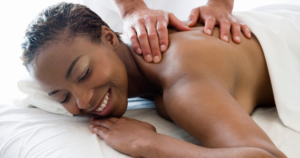
Are you looking to get the most out of your massage therapy sessions? Whether you’re dealing with muscle tension, chronic pain, or just need some relaxation, a massage can be a powerful tool for improving your physical and mental wellbeing. Here are five tips to help you make the most of your massage experience:
- Hydrate Before & After
Hydrated tissue is more pliable and flexible. This pliability makes it easier for the massage therapist to manipulate the soft tissue. Dehydration, on the other hand, can cause your muscles to become stiff and resistant to manipulation, leading to discomfort during the massage and potentially reducing its effectiveness. Hydrating both before and after a session can help reduce inflammation, support the flushing of toxins from your lymphatic system, decrease soreness and improve circulation. A little note: hydration isn’t just about drinking lots of water. Nutrition/having the right minerals helps your body put the water you drink to use. So if you feel like no matter how much you drink, your tissue/body does not feel hydrated, you can look into this further with a doctor/specialist.
- Communicate Directly & Clearly
For those that have not had many massages or are looking to get a massage for the first time, one of the best ways to get the most out of your session is to communicate your needs and feelings to your therapist both before and during your session. Don’t be afraid to ask questions, ask for clarification on things you don’t understand and most importantly be willing to express how you feel – both emotionally and physically. I’ve heard more than one person say “I laid on the table with anxiety because I told the therapist I had hip pain and when she started she was massaging my neck and back. It made me worried that she wouldn’t address my issue or give enough time and attention.” A lot is going on in the therapist’s mind in terms of their understanding of bodywork and perhaps based on posture or based on palpating they realize that much tension is coming from the upper body. And because the whole body is connected, it can be the case that hip pain is coming from another part of the body. But regardless of that, it’s absolutely beneficial to communicate with the therapist along the way. If the face cradle is bothering you, if you are cold, if something feels painful or if something feels good (especially if something feels good ), don’t hesitate to tell your therapist. They can shift directions at any time which assures you that you will be taken care of. This is your session and you should feel empowered to help make it everything you need it to be by clearly communicating.
- Relax & Feel Comfortable
Perhaps one of the biggest reasons people seek out massage therapy is to relax. And the great news is that physical touch and therapeutic massage can help us relax and release stress. But there are many things that go into relaxation and it’s a good idea to make the most out of your session by removing any barriers to relaxation prior to your arrival. That can mean putting your phone on do not disturb or taking deep breaths when you first get on the table. Or to build off of my second tip in this blog, removing barriers to relaxation can also mean communicating with your therapist about your needs such as asking for an extra blanket to stay warm during your session. Trust and safety is definitely a big part of feeling comfortable and being able to relax, so make sure you remove any barriers there by choosing the right therapist (feel free to check out my previous blog on trust by clicking here.) You know yourself best, so whatever it is that is going to make you feel more comfortable before the massage session starts, I definitely recommend prioritizing it to get the most out of your session!
- Take Time To Rest Afterwards
The one thing I hate about massage therapy is how fast time seems to fly and how it comes to an end before I feel ready most times. What I’ve learned being a therapist is that it can be extremely beneficial to take time to rest after a massage to allow your central nervous system to integrate the therapeutic benefits you received from the bodywork. What most often happens is that we jump off the table and go back to the real world that can be fast paced and full of pressure and stress. This is the reason that I’ve allowed for more time in my practice for people to sit and relax after a session and why I do in-home massage therapy as well. In-home allows you to go get in a bath or throw your robe on and enjoy tea by your fireplace afterwards, no need to get in your car and deal with traffic. If you aren’t relaxed in your own home and/or your time is limited on the table and you aren’t someone who easily falls into that deep rest state during massage, one thing you can try is cutting bodywork a little short. With the remaining 5-10 minute of your session you can prioritize a deep rest state or meditation by using NSDR recording or Binural Beats.
- Determine Frequency
Figure out how you can use massage therapy to feel your best. If you are trying to work on a specific issue, you may want to visit a therapist twice a week, once a week, or every other week. You may realize that scheduling a massage the first weekend of every month helps keep the aches away and a balanced state of mind. It’s important to find what works for you and then all you have to do is show up!
I hope these tips help! Click here if you would like to connect with me to schedule



